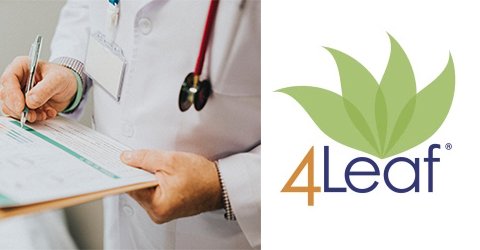

Numerous studies over the last 10 to 20 years have demonstrated that a plant-based diet can prevent and reverse many of our chronic medical conditions. In the United States, these conditions account for about 80% of our $3.2 trillion healthcare costs, not to mention the increased morbidity and mortality to americans. In addition to these studies, our federal government has recommended more fruits vegetables, whole-grains, legumes, with less animal sourced foods.
The concept of a whole food, plant-based diet with reduced salt, oil, and sugar has been advocated by a growing group of people. Some of the leaders in this field include: Dr. T. Colin Campbell, Dr. Caldwell Esselstyn, Dr. John McDougall, Dr. Dean Ornish, Dr. Neal Barnard, Dr. Michael Greger, and many more.
In the early 2000s, J. Morris Hicks (Jim) researched the healthiest diet for humans and our planet earth, and concluded that as Dr. Campbell says “the closer we get to eating a diet of whole plant-based foods, the better off we will be.“ J. Morris Hicks adopted this diet, became an author, and became an advocate for this lifestyle. In 2011, he published Healthy Eating Healthy World. J. Morris Hicks also has an on-going blog on this subject.
I became familiar with Jim in 2012, after replying positively to one of his blogs. Coincidentally I did not realize at the time, that I had read his book about a year earlier. Obviously, I just did not connect the dots.
My plant-based journey began in 2010 after reading The China Study, by Dr. T. Colin Campbell and his son Dr. Thomas M. Campbell. After reading most of works of the aforementioned authors listed above, and many more, I too, became an advocate for plant-based nutrition. I began recommending that lifestyle to my patients in my rural family practice. I was amazed at many of the medical transformations that I witnessed, as patients adopted a plant-based lifestyle. Interesting vignettes of weight loss, cholesterol normalization, improvement of diabetic hemoglobin A1Cs, better sleep, more energy, blood pressure normalization, and reduction of pharmaceutical medications were seen. All of this was achieved by simply changing the diet from the Standard American Diet (SAD) to a Whole Food, Plant-Based Diet (WFPBD). It seemed that the closer one came to 100% compliance to the whole food, plant-based diet, the better the results were seen. However, there was no way for me to quantitate a patient’s compliance.
About a year after our brief email introduction, Jim called me. Knowing that I was a rural family physician advocating this lifestyle, Jim asked if I would read the manuscript for him and his co-author Dr. Kerry Graff’s, new book entitled The 4Leaf Guide to Vibrant Health. I was fascinated by this book and the 4Leaf Survey which was introduced in the book.
The 4Leaf Survey is a 12-question, 2-minute tool that would allow one to initially see their nutritional status, with regard to SAD vs. WFPBD. The survey is simple, quick, and estimates the percentage of whole plant-based calories in your diet. Done initially, it identifies where the patient is, and if the patient chooses to adapt to a more healthful diet, it will easily track their progress. Each question is scored with either positive points or negative points. The potential maximum score is a +44 and the potential negative score is -44.
30-44 points= 4 Leaf Level= 80-100% calories from whole plants
20-29 points= 3 Leaf Level= 60-79% calories from whole plants
10-19 points= 2 Leaf level= 40 to 59% calories from whole plants
0-9 points= 1 Leaf Level= 20-39 calories from whole plants
-1- -20 points = Better than Most= 10-19% calories from whole plants
-21- -44points= Unhealthful Diet= Less than 10% calories from whole plants
(Not surprisingly, most Americans initially score in the unhealthy category.)
So using these results, one can easily see: 1) the general nutritional status of the patient, 2) in subsequent visits, how compliant the patient was with the diet, and 3) should I spend more time with dietary intervention, (particularly if they had an unhealthy diet). For those reasons, I have begun to use the 4Leaf Score as another vital sign.
This new vital sign will have diagnostic, therapeutic, and prognostic qualities that can be utilized by both the patient and the practitioner.
The 4Leaf Survey can be taken online, results tabulated, and suggestions on how to improve one’s score, is emailed back to the patient. Thus, the tool is not only diagnostic, but also therapeutic. Additionally, one’s 4Leaf score is also prognostic. Generally, as one goes up on the 4Leaf Level, other vital signs (weight, BP, BMI, pulse) normalize. Lastly, the patients other biomarkers (glucose, cholesterol, hemoglobin A1C, BUN/creatinine ratio) improve as one goes up the 4Leaf Level. This is a great tool both for the patient and the practitioner.
As a resource included in Dr. T. Colin Campbell’s online Plant-Based Nutrition course at eCornell, it is well on its way to becoming the dietary tool of choice for individuals as well as healthcare providers.
The medical profession is gradually moving to the conclusion that “food can be our medicine and our medicine can be our food.” This food medicine can actually improve, and indeed, cure, many of the chronic diseases we are plagued with today. The morbidity, mortality, and cost burden can be shifted in a positive direction utilizing this splendid simple tool!
I predict that within the next decade, the 4Leaf Survey or some similar tool will be added to the patient’s chart. This new vital sign will have diagnostic, therapeutic, and prognostic qualities that can be utilized by both the patient and the practitioner.
I commend J. Morris Hicks on his 4Leaf Survey. I also commend him and Dr. Kerry Graff on their book, The Four Leaf Guide to Vibrant Health, and would highly recommend it to both the patient and the practitioner.
Copyright 2026 Center for Nutrition Studies. All rights reserved.